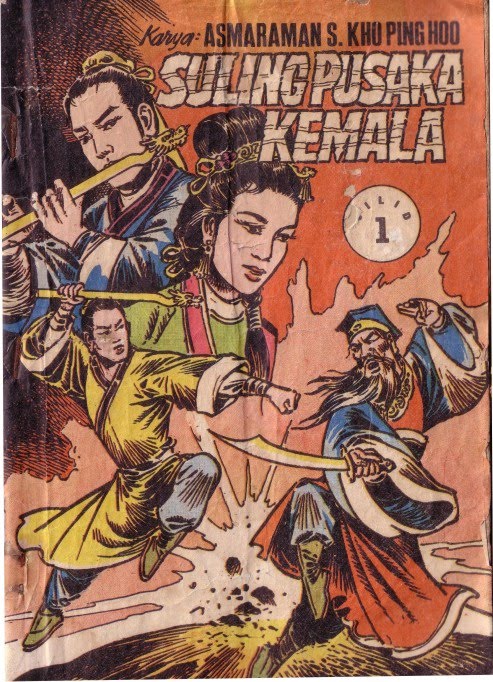

The rationalization process behind ekranisasi was a highly practical one, oriented not towards the creative adaptation of a creative work, but the exploitation of popular works to reach wider audiences, with modifications to take advantage of the medium and shifts in societal mores. Meanwhile, after the Great Depression the economy began to transform from one based on the production of raw goods to one based in manufacturing. Educated women called for greater women’s rights and protection of women’s welfare, changes which began to be implemented in the 1940s. The film industry itself was attempting to find a successful formula, and in its early years faced heavy competition from the theatre. The lower class, meanwhile, was highly fond of stage performances-oral literature for the illiterate which often loosely adapted famous novels.

Greater access to education meant that the financial elite were increasingly literate, leading to a growth in the literary industry. During the period covered, the Indies was a colony in flux. The works adapted, meanwhile, were generally popular in wide society-though often best known through stage performances and adaptations. The nine producers and directors involved in adapting novels came from a variety of ethnicities. Only one author had multiple works adapted, and two novels were adapted more than once. A total of eleven films were adapted from eight novels in the Indies.

Primary sources used include contemporary newspapers and novels that were adapted to film (keeping in mind that the films themselves are lost), whereas secondary sources used include journals, articles, books, and the internet. Data used is predominantly from primary and secondary sources. This study uses Weber’s concept of the social act, a rational action conducted by an individual in order to interact with society and reach a certain goal.

As such, this research was conducted in order to better understand the origins of this phenomenon and the earliest considerations in making the social act. The adaptation process from this period is little understood, yet important for understanding the history of screen adaptations, which are quickly becoming the most lucrative type of film in Indonesia. Krugers and ended in 1942-before the Japanese occupation-with the adaptation of Siti Noerbaja by Lie Tek Swie. "This study discusses the social act of adapting films from novels, as found in the Dutch East Indies, where this phenomenon began in 1927 with the adaptation of Eulis Atjih by G. Berdasarkan kasus-kasus di kedua negara tersebut, khususnya dalam periode Soeharto dan Mao Zedong, dapat dilihat bahwa sastra dapat memiliki hubungan langsung atau tidak langsung dengan kebijakan pemerintah, dan hubungan ini membawa dampak positif dan negatif pada sastra dan tren sastra pada kurun waktu tertentu. Garis-garis politik pemerintah seringkali menentukan tren sastra di sana. Situasi seperti ini membuat sastra di Cina memiliki hubungan erat dan langsung dengan pemerintah. Mereka sering menggunakan kekuasaan untuk mengawasi sastra, dan juga menggunakan sastra untuk menyampaikan kebijakan-kebijakannya. Sementara karena fungsi dari sastra yang salah satunya bisa dijadikan alat menyampaikan kritik, pemerintah Cina sangat peka terhadap sastra. Akan tetapi keputusan-keputusan politik pemerintah, atau instruksi-instruksi presiden, yang sering kali didukung kekuatan militer, juga membawa dampak pada sastra dan tren sastra. Pemerintah Indonesia tidak pernah menggunakan sastra sebagai alat untuk menyampaikan kebijakan, dan tidak menjadikan sastra sebagai agenda penting dalam rapat-rapat partai. Membandingkan antara Indonesia dengan Cina, Indonesia memiliki situasi yang berbeda dengan Cina. Sastra memiliki fungsi untuk menyampaikan pesan atau tujuan politik, juga menjadi alat untuk menyampaikan kritik. Abstrak Sastra dan kebijakan pemerintah sering dianggap tak dapat dipisahkan.


 0 kommentar(er)
0 kommentar(er)
